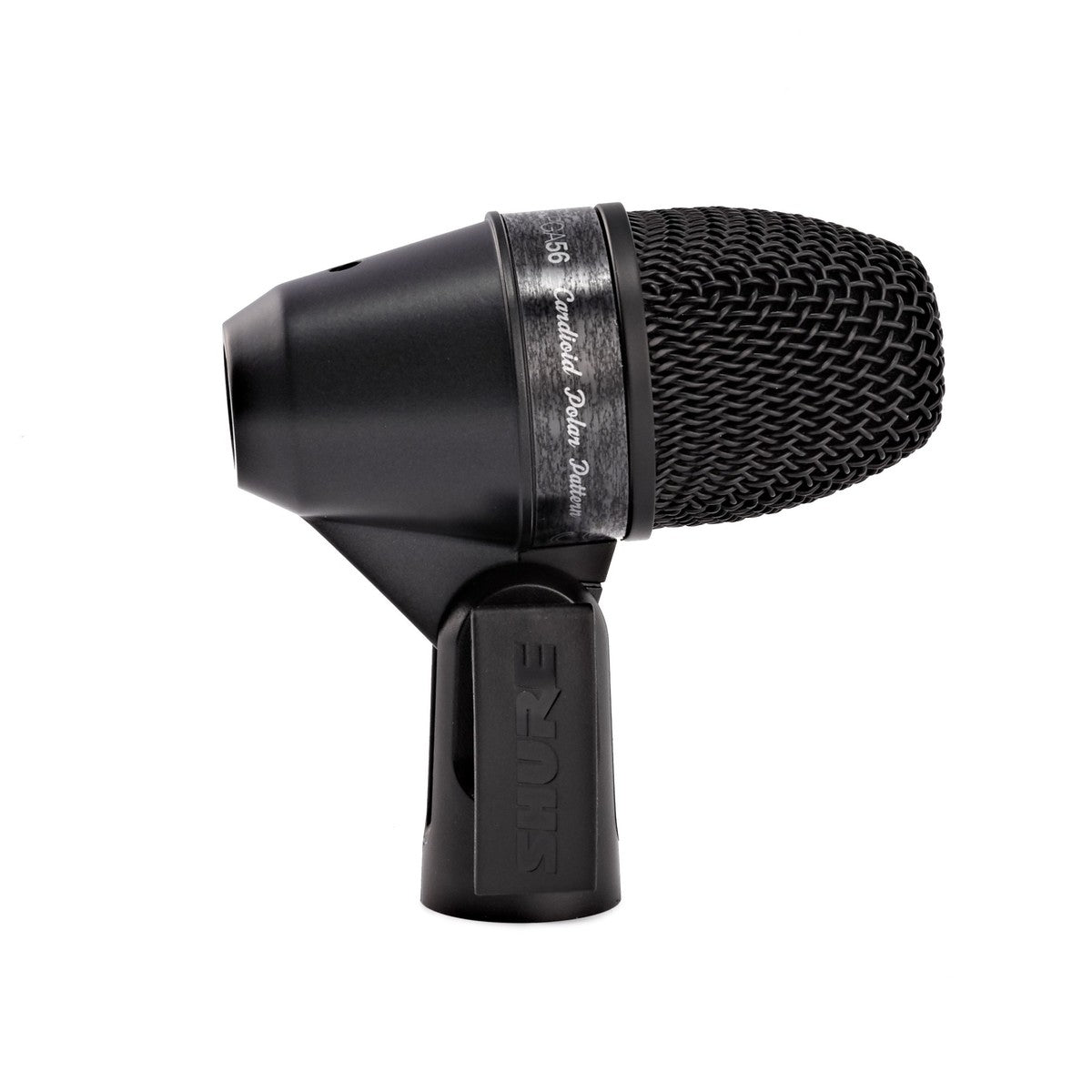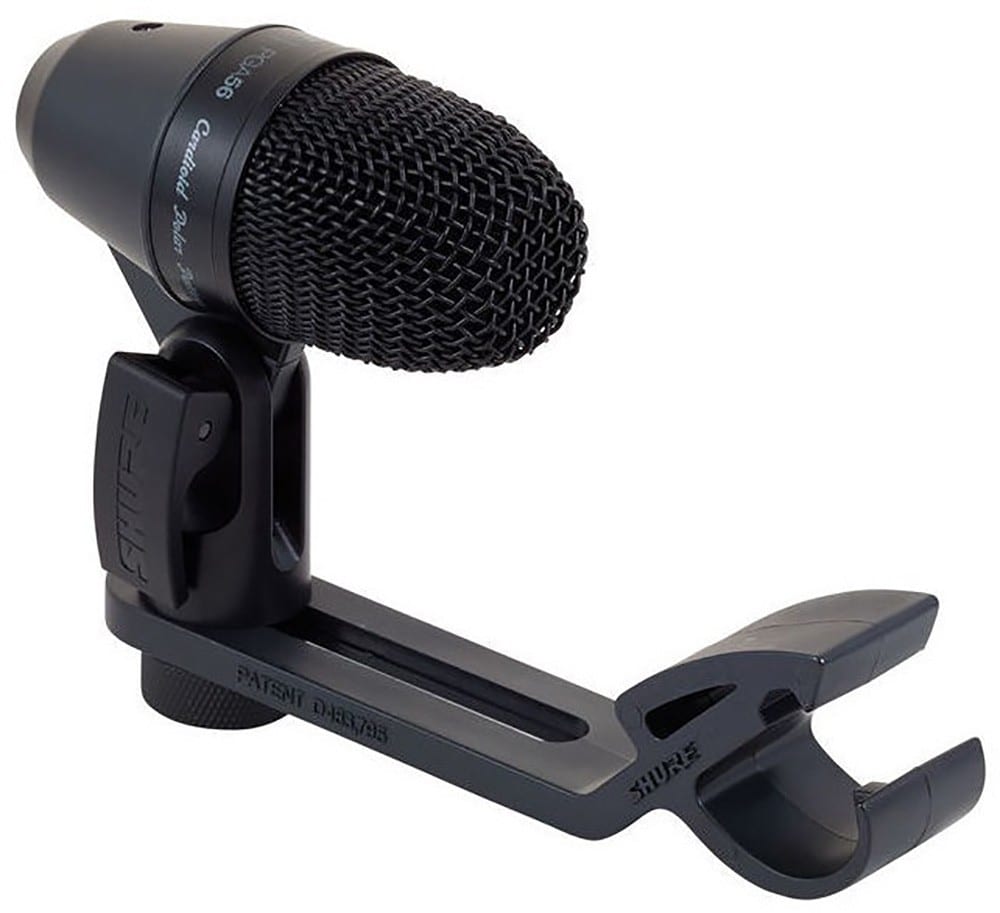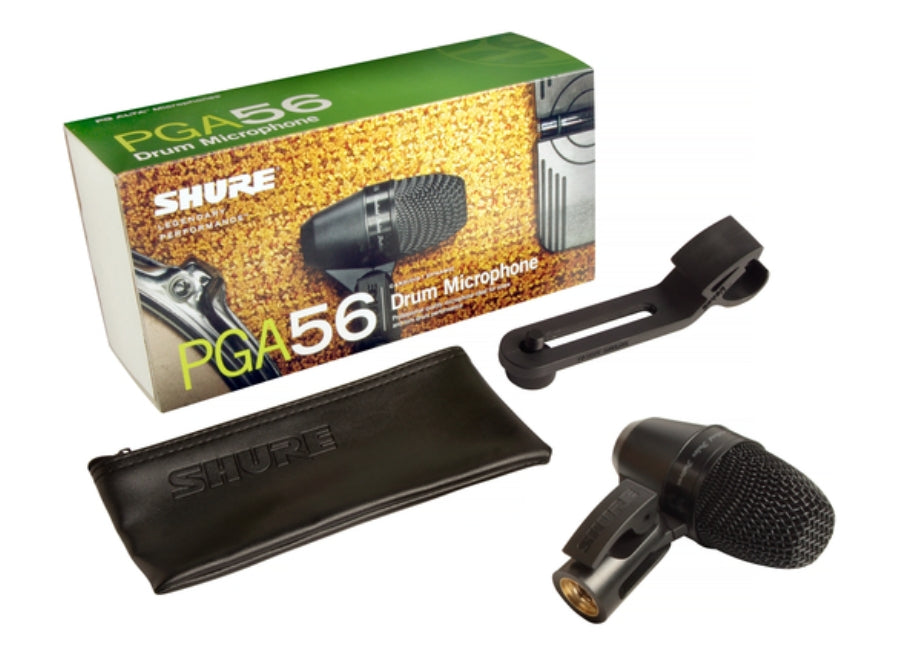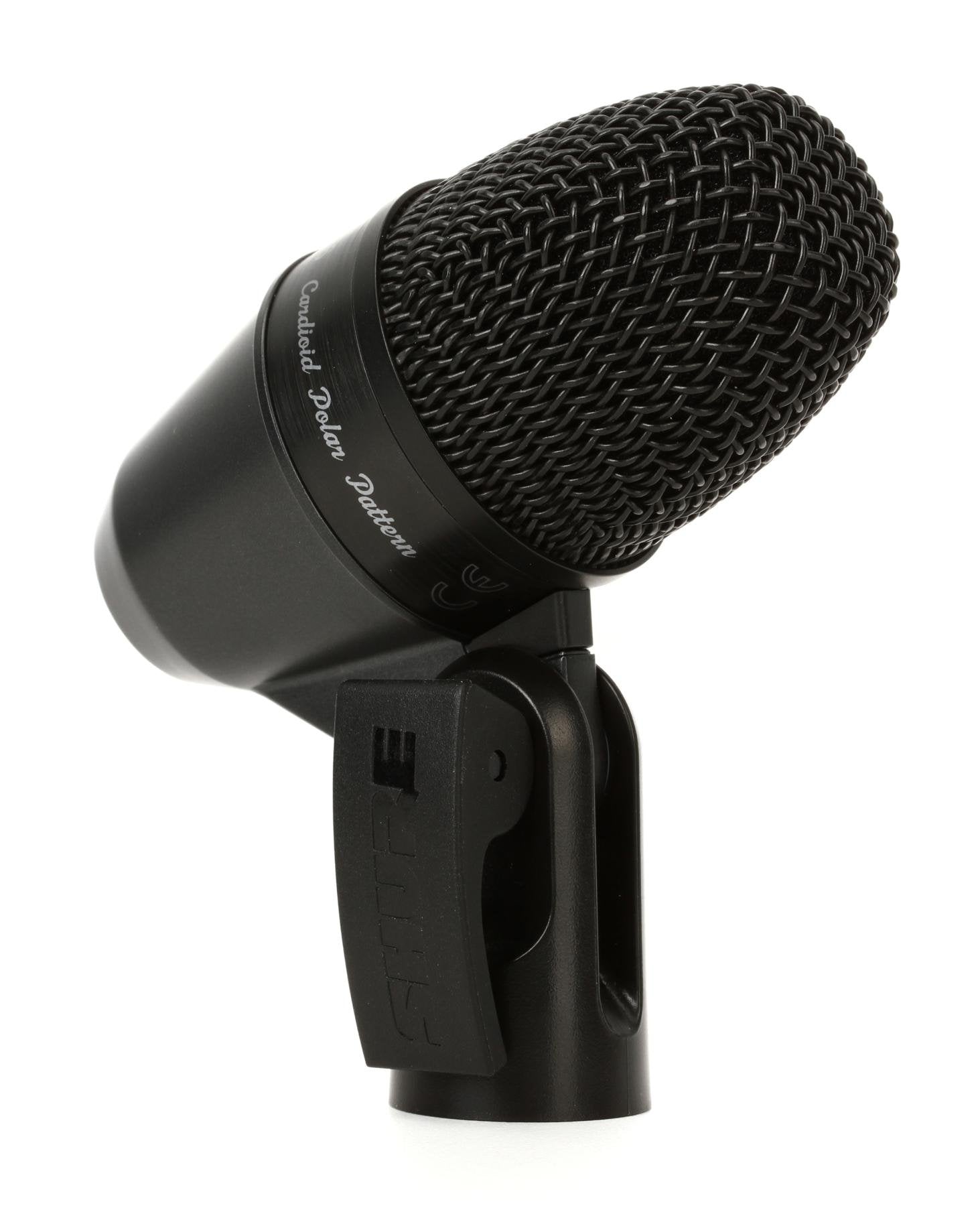Subscribe to receive promotions, discounts and latest news from SE Concept
Professional Audio Shop Established Since 1996
Cardioid dynamic snare and tom microphone delivers clear reproduction of the sound source in close-miking percussion applications. It includes, a drum mount, an optional XLR cable, and swivel joint with quick release latch.
The PGA56 is a professional quality snare / tom microphone with an updated design that features a black metallic finish and grille offering an unobtrusive visual presence.
Additional design highlights include a swivel joint featuring a quick-release latch similar to bicycle component-locking technology for extremely quick and easy positioning, and a tailored cartridge for clear reproduction of sound sources.
The following table lists the most common applications and placement techniques. Keep in mind that microphone technique is largely a matter of personal taste; there is no one "correct" microphone position.
| Application | Suggested Microphone Placement | Tone Quality |
|---|---|---|
| Tom-Toms | One mic on each tom, or between each pair of toms, 2.5 to 7.5 cm(1 to 3 in.) above drum heads. Aim each microphone at top drum heads. On double head toms, you can also remove bottom head and place a mic inside pointing up toward top drum head. | Medium attack; full, balanced sound. |
| Snare Drum | 2.5 to 7.5 cm (1 to 3 in.) above rim of top head of drum. Aim mic at drum head. | Most “snap” from drumstick. |
NOTE: Before each use, make sure the grille is tightly secured on the microphone, as vibration and accidental hits with drumsticks may loosen it, resulting in signal loss.
Directional microphones progressively boost bass frequencies as the microphone is placed in closer proximity to the source. This phenomenon, known as proximity effect, can be used to create a warmer, more powerful sound.
Place the microphone so that unwanted sound sources, such as monitors and loudspeakers, are directly behind it. To minimize feedback and ensure optimum rejection of unwanted sound, always test microphone placement before a performance.

Recommended Loudspeaker Locations for Cardioid Microphones
This microphone features a quick-release lever to easily adjust position.



Note: To adjust the tension on the lever, pull it open and use a flat head screwdriver to tighten or loosen the bolt on the opposite side.

|
Drum Microphone Mount |
AP56DM |
|
7.6 m (25 ft.) Cable (XLR-XLR) |
C25J |
|
PGA56 Replacement Grille |
RPMP56G |
|
PGA56 Replacement Grille |
RPMP56G |
Dynamic (moving coil)
50 to 15, 000 Hz
Cardioid
200 Ω
at 1 kHz, open circuit voltage
-57 dBV/Pa¹ (1.45 mV)
Positive pressure on diaphragm produces positive voltage on pin 2 with respect to pin 3
287 g (10.12oz.)
Three-pin professional audio (XLR), male
| Operating Temperature | -20° to 165°F (-29° to 74°C) |
| Relative Humidity | 0 to 95% |
1 Pa=94 dB SPL

Typical Frequency Response

Typical Polar Pattern

Shop In Store
Come try your favorite dj controller in store, see the latest light effects in action! See our specialist for a good advice.
Buy Online & Pick-up Same Day
If a product shows ''Ready to Ship'' you can always select ''Pickup in store'' at checkout and come the same day at your earliest convenience
Gift Card Available Online
Make a surprise buy a Gift Card
Please wait...


Cardioid dynamic snare and tom microphone delivers clear reproduction of the sound source in close-miking percussion applications. It includes, a drum mount, an optional XLR cable, and swivel joint with quick release latch.
The PGA56 is a professional quality snare / tom microphone with an updated design that features a black metallic finish and grille offering an unobtrusive visual presence.
Additional design highlights include a swivel joint featuring a quick-release latch similar to bicycle component-locking technology for extremely quick and easy positioning, and a tailored cartridge for clear reproduction of sound sources.
The following table lists the most common applications and placement techniques. Keep in mind that microphone technique is largely a matter of personal taste; there is no one "correct" microphone position.
| Application | Suggested Microphone Placement | Tone Quality |
|---|---|---|
| Tom-Toms | One mic on each tom, or between each pair of toms, 2.5 to 7.5 cm(1 to 3 in.) above drum heads. Aim each microphone at top drum heads. On double head toms, you can also remove bottom head and place a mic inside pointing up toward top drum head. | Medium attack; full, balanced sound. |
| Snare Drum | 2.5 to 7.5 cm (1 to 3 in.) above rim of top head of drum. Aim mic at drum head. | Most “snap” from drumstick. |
NOTE: Before each use, make sure the grille is tightly secured on the microphone, as vibration and accidental hits with drumsticks may loosen it, resulting in signal loss.
Directional microphones progressively boost bass frequencies as the microphone is placed in closer proximity to the source. This phenomenon, known as proximity effect, can be used to create a warmer, more powerful sound.
Place the microphone so that unwanted sound sources, such as monitors and loudspeakers, are directly behind it. To minimize feedback and ensure optimum rejection of unwanted sound, always test microphone placement before a performance.

Recommended Loudspeaker Locations for Cardioid Microphones
This microphone features a quick-release lever to easily adjust position.



Note: To adjust the tension on the lever, pull it open and use a flat head screwdriver to tighten or loosen the bolt on the opposite side.

|
Drum Microphone Mount |
AP56DM |
|
7.6 m (25 ft.) Cable (XLR-XLR) |
C25J |
|
PGA56 Replacement Grille |
RPMP56G |
|
PGA56 Replacement Grille |
RPMP56G |
Dynamic (moving coil)
50 to 15, 000 Hz
Cardioid
200 Ω
at 1 kHz, open circuit voltage
-57 dBV/Pa¹ (1.45 mV)
Positive pressure on diaphragm produces positive voltage on pin 2 with respect to pin 3
287 g (10.12oz.)
Three-pin professional audio (XLR), male
| Operating Temperature | -20° to 165°F (-29° to 74°C) |
| Relative Humidity | 0 to 95% |
1 Pa=94 dB SPL

Typical Frequency Response

Typical Polar Pattern



0




